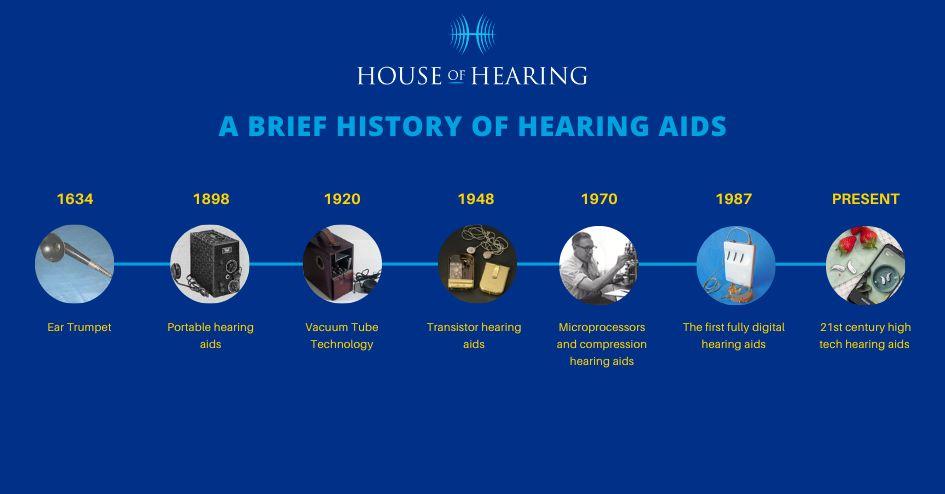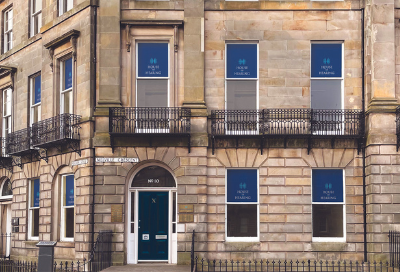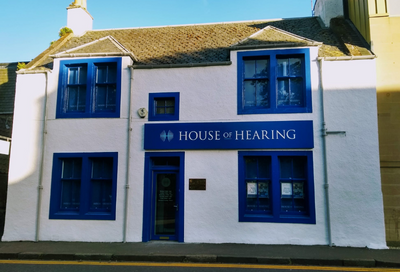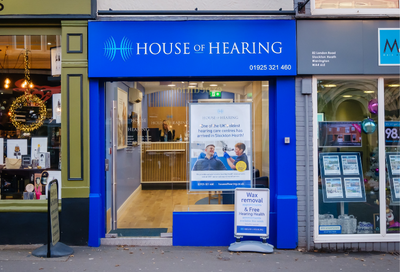
The History of Hearing Aids and Listening Devices
Hearing loss is not a new condition in the slightest, people have been living with and trying to cure hearing loss for centuries.
The ultra-sleek wireless devices that we see today came about through centuries of innovation and adaptation, and, although some assume that hearing aids are still old-fashioned, awkward, clunky things, the reality is that we have never had better, smaller or lighter hearing aids available to us.
Join us as we take a look at where the brilliant hearing aids we have today originated- you will be shocked to see just how far the technology has progressed!
Ear Trumpet - 1634 
The ear trumpet was a tubular or funnel shaped device which was placed into the ear to collect sound waves and lead them to the cochlear. By the late 18th century ear trumpets had vastly grown in popularity and became incredibly common amongst those with hearing difficulties. In 1800 Fredrick C. Rein’s company ‘F. C. Rein and Son’ became the first commercial producer of the ear trumpet and it wasn’t until 1963 that the company ceased production due to the rise in popularity of electrical hearing aids.
The first portable hearing aid - 1898
In 1898 Miller Reese Hutchinson invented the first portable hearing aid, thanks to the technology behind the creation of the telephone and the microphone. The device was commercially dubbed the ‘Akouphone’ and it is believed that Hutchinson invented it for a friend. The Akouphone used a carbon transmitter so that it could be transportable, the use of the carbon transmitter also allowed an electrical current to take a weak signal and turn it into a strong signal.
One of the major drawbacks of the Akouphone, and arguably the main reason it never became all that popular, is the clunky infrastructure that came with it, along with its hefty price point. The Akouphone consisted of several separate pieces including headphones, batteries, amplifiers and microphones.
Vacuum tube technology - 1920 .png)
In 1920 Earl Hanson patented the Vactuphone, the first vacuum tube hearing aid. The Vactuphone used telephone transmitters to convert speech into electrical signals which were then amplified through a receiver.
The Vactuphone became commercially available in 1923 and soon after its release, competition began to follow as others saw its success. With this new wave of competition one thing became clear: the Vactuphone was too big. This was the catalyst that pushed forward the miniaturisation movement. Devices kept on getting smaller and public demand kept on increasing until the introduction of transistor hearing aids.
Transistor hearing aids - 1948 
Technological advances were spurred on by the second world war and in 1948 transistor hearing aids were introduced to the public. The new aids quickly gained popularity and soon replaced the vacuum tube hearing aids altogether. Transistor hearing aids proved to be superior in many ways: they produced less distortion, they were smaller than their predecessors and they required less battery power to operate. They seemed like the perfect product – however, it wasn’t sunshine and rainbows for long! The hearing aids ‘died’ after only a few weeks of use – the root cause of this being dampness which stopped the transistor from working. Despite this, the transistor hearing aids’ faults had their benefits; resolving these issues led to the development of protective coating and silicon transistors which could function in damp conditions.
Microprocessors and compression hearing aids - 1970 
In the 1970s the microprocessor was created which vastly increased the trajectory of hearing aid miniaturisation. In 1973 Edgar Villchur came up with a revolutionary hearing aid design. His idea was to use multi-channel compression to make up for the variable loss of sound a patient experienced. Each person would have an audiogram combined with individual testing that would allow for hearing aids to be individually adapted to each person. The multi-channel nature of the device meant that patients with hearing losses in specific frequency ranges could get the amplification where they needed it.
Rather than patent this game-changing product, Villchur published his findings and made them available to anyone who wanted to use them.
High speed processor - 1982
In 1982 an all-digital real-time processing hearing aid was created at the City University of New York; it was designed as a research tool for the exploration of how digital signals are processed. The device was quite bulky as it had to hold a minicomputer, a digital array processor and an FM transmitter and receiver.
The development of digital processing paved the way for faster processing, however they were too large and consumed too much power to be used in useable hearing aids. Over time, technological improvements have reduced these drawbacks allowing for a more practical level of processing in digital hearing aids.
The first fully digital hearing aids - 1987 
In 1987 the Nicolet Corporation released the first fully digital hearing aid to the public, the ‘Nicolet Phoenix’. The product had very little commercial success, but the market took notice and the race to develop a successful digital hearing aid that was more viable for the public was afoot.
Developments were occurring left, right and centre with the introduction of hybrid instruments that used analog amplifiers, filters and limiters that could be controlled digitally. Two years after the Nicolet corporation released their hearing, aid the first commercial behind-the-ear (BTE) fully digital hearing aid was launched.
21st century high tech hearing aids 
Hearing aids have become much more widespread and commercially available, now it is much more common to see members of the general public with a hearing aid. Technologically, hearing aids have vastly improved from those we listed above.
Modern day hearing aids offer users functional versatility and have excellent efficiency, which allows manufacturers to include features such as effective ambient noise control, suppression, and isolation. On top of this, modern hearing aids often feature Bluetooth connectivity allowing users to stream from the TV or mobile phone directly to their hearing aids
For the most up to date hearing aid technology visit one of our state-of-the-art clinics or call us to book a free hearing health assessment with one of our senior audiologists on 0131 220 1220
Our Clinics
All House of Hearing clinics are in town centre locations and accessible to public transport and parking. Home visits also available if mobility is an issue.


.png)
.png)
.png)

.png)
